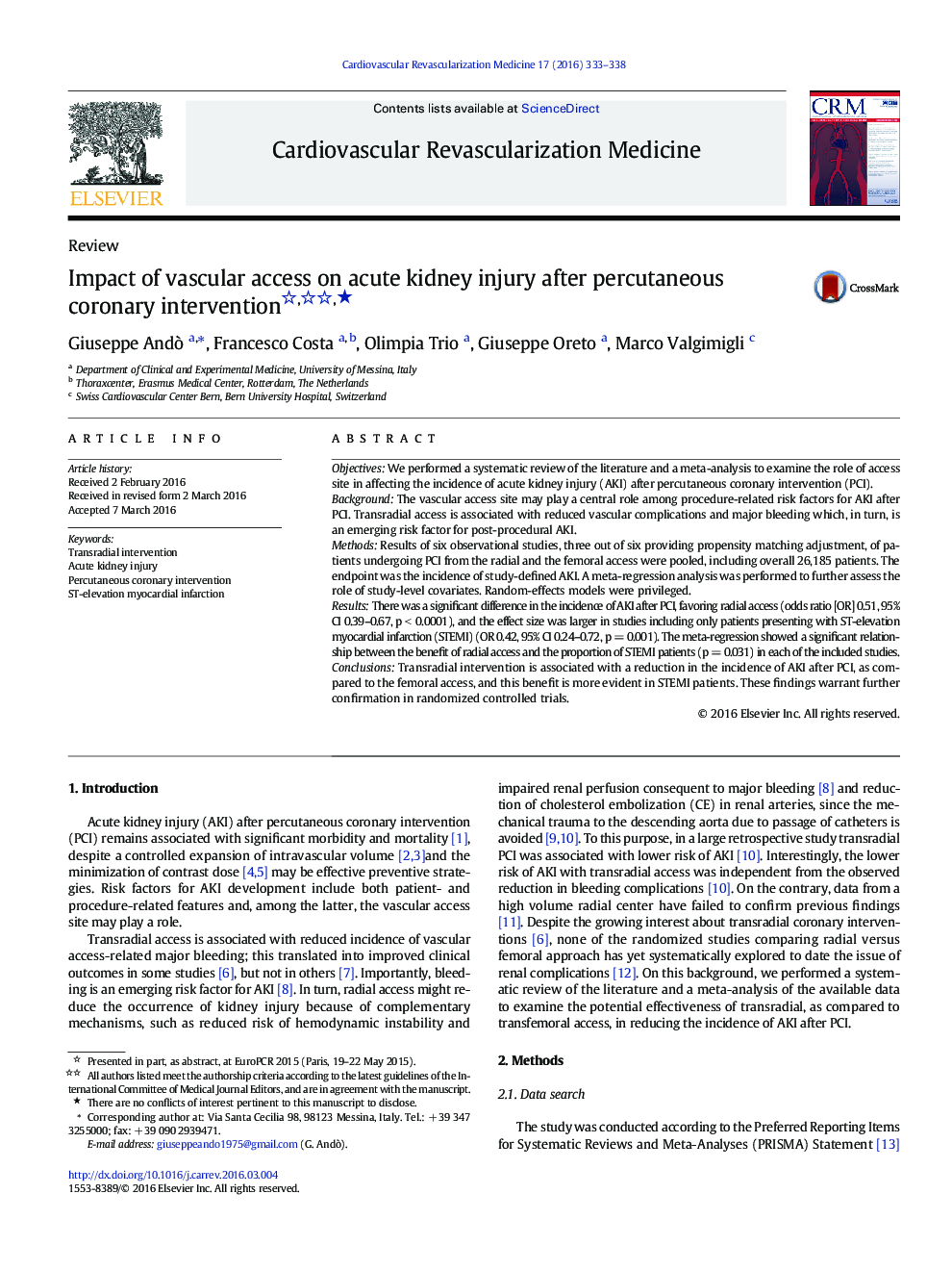| کد مقاله | کد نشریه | سال انتشار | مقاله انگلیسی | نسخه تمام متن |
|---|---|---|---|---|
| 2836861 | 1164862 | 2016 | 6 صفحه PDF | دانلود رایگان |
• Transradial access produces a significant net clinical benefit in patients with acute coronary syndrome by reducing major bleeding.
• Risk factors for acute kidney injury after percutaneous coronary intervention include both patient- and procedure-related features. Among the latter, vascular access site may play a role.
• Peri-procedural bleeding is a risk factor for post-procedural acute kidney injury.
• Observational studies have shown an association between radial access and a reduced incidence of acute kidney injury.
• These findings warrant further confirmation in randomized controlled trials.
ObjectivesWe performed a systematic review of the literature and a meta-analysis to examine the role of access site in affecting the incidence of acute kidney injury (AKI) after percutaneous coronary intervention (PCI).BackgroundThe vascular access site may play a central role among procedure-related risk factors for AKI after PCI. Transradial access is associated with reduced vascular complications and major bleeding which, in turn, is an emerging risk factor for post-procedural AKI.MethodsResults of six observational studies, three out of six providing propensity matching adjustment, of patients undergoing PCI from the radial and the femoral access were pooled, including overall 26,185 patients. The endpoint was the incidence of study-defined AKI. A meta-regression analysis was performed to further assess the role of study-level covariates. Random-effects models were privileged.ResultsThere was a significant difference in the incidence of AKI after PCI, favoring radial access (odds ratio [OR] 0.51, 95% CI 0.39–0.67, p < 0.0001), and the effect size was larger in studies including only patients presenting with ST-elevation myocardial infarction (STEMI) (OR 0.42, 95% CI 0.24–0.72, p = 0.001). The meta-regression showed a significant relationship between the benefit of radial access and the proportion of STEMI patients (p = 0.031) in each of the included studies.ConclusionsTransradial intervention is associated with a reduction in the incidence of AKI after PCI, as compared to the femoral access, and this benefit is more evident in STEMI patients. These findings warrant further confirmation in randomized controlled trials.
Journal: Cardiovascular Revascularization Medicine - Volume 17, Issue 5, July–August 2016, Pages 333–338
